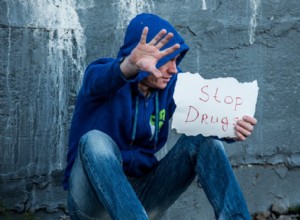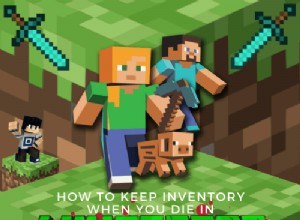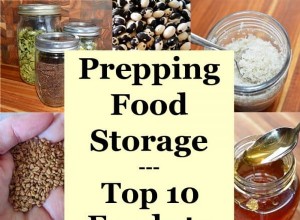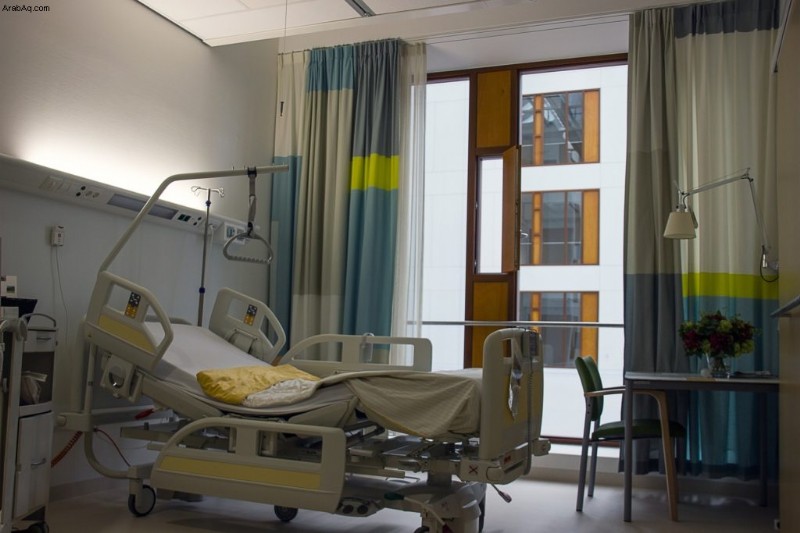
المساهم:مارك س. جولد ، دكتور في الطب ، أستاذ ، كلية الطب بجامعة واشنطن - قسم الطب النفسي
اضطرابات استخدام المواد الأفيونية وأوبئة الجرعات الزائدة من المواد الأفيونية
تتزايد صيحات المساعدة منذ الحجر الصحي لفيروس كورونا. كان EMTs مشغولًا بـ COVID 19 ، وكذلك أقسام الطوارئ المجتمعية والمستشفيات العامة. نظام دعم عكس الجرعات الزائدة (Naloxone و MATs الأخرى) الذي قمنا بتثبيته معًا للاستجابة لوباء استخدام المواد الأفيونية قد تم كسره.
قفزت الجرعات الزائدة المشتبه بها على الصعيد الوطني بنسبة 18 في المائة في مارس ، و 29 في المائة في أبريل و 42 في المائة في مايو ، حسبما أفادت بيانات من فرق الإسعاف والمستشفيات والشرطة في 1 يوليو من قبل صحيفة واشنطن بوست [1]. لقد ناقشنا سابقًا [2] اضطرابات استيراد الهيروين والكوكايين وشبكات التوزيع.
تم استبدالها بالعقاقير الاصطناعية مثل الفنتانيل والميثامفيتامين ، المصنعة في الصين والهند وجنوب شرق آسيا والمكسيك. كونك عالقًا في المنزل ، أو منعزلاً ، أو غير قادر على رؤية مستشارهم أو الذهاب إلى اجتماعات العلاج شخصيًا ، فقد خلق العاصفة المثالية لعودة ظهور استخدام المواد الأفيونية ، واضطراب استخدام المواد الأفيونية ، وأوبئة جرعة زائدة من المواد الأفيونية.
كنا نظن أننا بلغنا ذروته عندما تظهر البيانات الواردة من مراكز السيطرة على الأمراض انخفاضًا هامشيًا في الجرعات الزائدة المميتة في عام 2018 ، من 70237 إلى 68557 ، كما تكشف أيضًا أن الفنتانيل لا يزال السبب الرئيسي للجرعات الزائدة القاتلة. تُظهر بيانات 2018 أنه كل يوم ، يموت 128 شخصًا في الولايات المتحدة بعد تناول جرعة زائدة من المواد الأفيونية.
توفي ما لا يقل عن 47600 شخص في الولايات المتحدة الأمريكية من جرعات زائدة من المخدرات التي تنطوي على المواد الأفيونية في عام 2017 ، وتشير التقديرات إلى أن 500000 حالة وفاة بسبب الجرعات الزائدة من المواد الأفيونية قد تحدث خلال السنوات الخمس المقبلة. المواد الأفيونية الاصطناعية ، الفنتانيل ، المصنعة في الصين أو الهند أو المكسيك تشكل جزءًا كبيرًا من مشكلة الجرعة الزائدة.
بين عامي 2012 و 2018 ، ارتفع عدد الجرعات الزائدة المميتة التي يسببها الفنتانيل بشكل كبير ، وهو ما يمثل غالبية الوفيات الناجمة عن الجرعات الزائدة. كما وصف العديد من الخبراء مثل رومانس [3] وشيشرون [4] وجولد [5] ، فقد زاد عدد الوصفات الطبية المكتوبة للألم وتراكم في خزانة الأدوية فقط للعثور على مستخدمين جدد في الأسرة وغيرها.
في عام 2017 ، كتب مقدمو الرعاية الصحية في جميع أنحاء الولايات المتحدة أكثر من 191 مليون وصفة طبية لأدوية مسكنات الألم - بمعدل 58.7 وصفة طبية لكل 100 شخص. سرعان ما أعقب أزمة المواد الأفيونية الموصوفة انتشار وباء تعاطي الهيروين وأصبحت الآن أزمة فينتانيل وأزمة أفيونية اصطناعية حيث نرى المزيد من الاضطرابات الأولية لاستخدام الفنتانيل [6]. لقد زاد هذا الاتجاه نحو الفنتانيل فقط في وباء COVID19.
تصاعدت الزيادة غير المسبوقة في الجرعات الزائدة والوفيات المرتبطة بالمواد الأفيونية بشكل كبير ، لتتغلغل في جميع شرائح وطبقات المجتمع الأمريكي بينما تطغى في الوقت نفسه على نظام الرعاية الصحية لدينا وتربك صانعي السياسات. تبعت الموجات الثلاث لأزمة المواد الأفيونية الحالية:المواد الأفيونية التي تصرف بوصفة طبية ، والهيروين ، والمواد الأفيونية الاصطناعية.
الآن ، لدينا وباء اصطناعي أو حتى استخدام أساسي للفنتانيل. ليس من المرجح أن تختفي. يمكن لعصابات المخدرات أن تصنع الفنتانيل في جميع أنحاء العالم بتكلفة قليلة. تتمثل إحدى النتائج الرئيسية لتقرير باردو وزملاؤه في أن عدد وفيات الفنتانيل لا يزداد بسبب المستهلكين الجدد ، ولكن لأنه يحل محل المواد الأفيونية الأقل فتكًا بين الأفراد باستخدام العود.
يستمر اضطراب استخدام المواد الأفيونية وإدمان المواد الأفيونية عند مستويات الوباء في الولايات المتحدة وفي جميع أنحاء العالم. يعاني ثلاثة ملايين مواطن أمريكي و 16 مليون مواطن في جميع أنحاء العالم من اضطراب استخدام المواد الأفيونية. أكثر من 500000 في الولايات المتحدة يعتمدون على الهيروين.
في منشور حديث في مجلة Science [7] ، فحص الباحثون الوفيات الناجمة عن الجرعات الزائدة من المخدرات وحالات التسمم غير المتعمدة بالمخدرات في الولايات المتحدة. لقد أظهروا أنه في حين أن الجرعات الزائدة من المخدرات قد تبدو وكأنها تأتي وتذهب ، إلا أنها في الواقع تنمو عامًا بعد عام.
من عام 1979 حتى عام 2016 ، نما بشكل كبير على طول مسار سلس بشكل ملحوظ. كان عكس الجرعات الزائدة من المواد الأفيونية مع Naloxone أو Narcan جزءًا مهمًا من استراتيجية الحد من الضرر في السبعينيات وأكثر أهمية اليوم.
عكس الجرعة الزائدة في المستشفيات ، بواسطة EMTs ، في المنزل ، والمجتمع
N-allyl- noroxymorphone ، المعروف اليوم باسم naloxone ، هو مشتق من مادة oxymorphone الأفيونية الاصطناعية. يُطلق على Naloxone أو Narcan اسم كل شيء بدءًا من الدواء الرائع وحتى التدخل الوحيد الأكثر فائدة وحيوية في الحد من تأثير استخدام المواد الأفيونية وأوبئة الجرعات الزائدة [8].
حصل النالوكسون على براءة اختراع لأول مرة في عام 1961 ، وتمت الموافقة عليه من قبل إدارة الأغذية والعقاقير
في عام 1971 تحت اسم Narcan. يشير إليه معظم الناس بهذا الاسم ، ناركان. على الرغم من أنه دواء قديم ، فهو أكثر أهمية اليوم من أي وقت مضى. إنه موضوع مراجعة دوائية حديثة [9].
في حين أن معظم الأدوية توصف بعد زيارة المكتب والفحص ، فإن النالوكسون يتم إعطاؤه في الغالب من قبل المتخصصين غير الصحيين ، وفرق الطوارئ الطبية ، والأصدقاء ، وغيرهم أيضًا يقدمها مقدمو الخدمات الصحية في غرفة الطوارئ في المستشفيات. يعتبر النالوكسون آمنًا ، لذا فهو آمن لدرجة أنه غالبًا ما يتم إعطاؤه عندما يكون التشخيص موضع تساؤل ، مثل اختبار التشخيص تقريبًا.
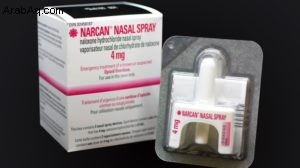 إذا لم يتم عكس الغيبوبة أو أزمة انخفاض التنفس عن طريق النالوكسون ، فيجب ألا تكون مادة أفيونية جرعة زائدة يقول المثل. في غرفة الطوارئ ، يُعطى Narcan معظم أي شخص يتعاطى المسكنات الأفيونية ويعاني من حالة طارئة مع تلاميذ محددين أو نقص في النبض أو التنفس أو الوعي مع وجود تاريخ من أي مسكنات أفيونية جديدة بوصفة طبية أو تعاطي المخدرات غير المشروع.
إذا لم يتم عكس الغيبوبة أو أزمة انخفاض التنفس عن طريق النالوكسون ، فيجب ألا تكون مادة أفيونية جرعة زائدة يقول المثل. في غرفة الطوارئ ، يُعطى Narcan معظم أي شخص يتعاطى المسكنات الأفيونية ويعاني من حالة طارئة مع تلاميذ محددين أو نقص في النبض أو التنفس أو الوعي مع وجود تاريخ من أي مسكنات أفيونية جديدة بوصفة طبية أو تعاطي المخدرات غير المشروع.
مجرد إعطاء Narcan ممكن ، لأنه سريع المفعول وآمن وله آثار جانبية قليلة بشكل ملحوظ. لا يستطيع ناركان الحصول على شخص منتشي ، ولا يمكنك التمييز بين أخذ حقنة نالوكسون عن طريق الوريد ومياه مالحة. التأثير الجانبي الرئيسي هو التأثير المطلوب ، مما ينتج عنه انسحاب حاد من المواد الأفيونية.
يستخدم النالوكسون في الولايات المتحدة منذ أكثر من 50 عامًا. إنها الدعامة الأساسية أو الدعامة الأساسية في الإعدادات الطبية لعكس تأثيرات المواد الأفيونية وسمية المواد الأفيونية والجرعة الزائدة.
لقد أعطيته خلال فترة تدريبي في غرفة الطوارئ في ييل في السبعينيات. في ذلك الوقت ، تمت الموافقة على النالوكسون فقط للإعطاء عن طريق الوريد (IV) والعضل (IM) وتحت الجلد (SQ). لقد أنقذ ناركان وعالج عشرات الآلاف من الجرعات الزائدة من المواد الأفيونية. يعد إنقاذ وإنعاش وإحياء ضحايا الجرعة الزائدة خطوات حاسمة في مساعدة الأشخاص الذين يعانون من اضطرابات استخدام المواد الأفيونية (OUD).
عندما نظرت بيت [10] وزملاؤها في جامعة ستانفورد في ما يمكن أن يكون له أكبر تأثير في الحد من وفيات العود ، كان ناركان. لم يكن هناك وقاية أو علاج أو تدخل صحة عامة آخر قريب من الفعالية. إن وصف النالوكسون لمستخدمي المواد الأفيونية وتشجيع هؤلاء المرضى الذين يعانون من العود على أخذ ناركان معهم ، مع توفير MATs والاستشارات المناسبة ، هو جوهر عنصر الحد من الضرر لنموذج العلاج الشامل لـ OUD.
لا ينبغي تقديم المشورة لمرضى العود فقط ، ومستخدمي المواد الأفيونية بدون وصفة طبية ، ومرضى الألم الذين يعطون وصفات ناركان ، والمرضى الأكبر سنًا ، وغيرهم فيما يتعلق بعلامات وأعراض جرعة زائدة من المواد الأفيونية ، بما في ذلك التلاميذ بدقة ، والتنفس الضحل أو الغائب ، وعدم الاستجابة. في حالة الاشتباه في جرعة زائدة ، يجب إعطاء النالوكسون من قبل أي شخص لديه ، في أقرب وقت ممكن. ثم اتصل برقم 911.
النالوكسون - علم الأدوية
من الناحية الدوائية ، يعد النالوكسون مضادًا تنافسيًا عالي التقارب في مستقبلات μ- و-و-opioid. يعتبر النالوكسون مضاد "نقي". Naloxone, which effectively displaces any full and/or partial agonists (e.g., heroin, oxycontin, fentanyl) occupying opioid receptors which produce euphoria, sedation, sleepiness, respiratory depression, bradycardia, analgesia, and small pupils. Thus, naloxone is a real wonder drug- fast-acting, safe, easily administered opioid antidote, capable of reversing both opioid intoxication states and overdose.
More recently, an intranasal (IN) formulation of naloxone was invented and brought to market. IN delivery reduced the need for IV access (it can be challenging to find a vein in OUD overdose or in people who inject drugs) during emergencies, needlestick injuries or disposal issues, and made the medication available to most everyone.
All of a sudden, medically untrained individuals could safely administer naloxone with a reasonable probability of reversing the opioid-induced overdose and respiratory depression. Intranasal (IN ) naloxone was similar in safety, rescue, and overdose reversal efficacy to iv Narcan. Narcan Nasal Spray made it possible for friends, lay first responders, family, and others to use Narcan to save a life.
The onset of action varies depending on the route of administration but can be as fast as one minute when delivered. When administered IV, naloxone usually fully reverses the opioid effects within a few minutes. In patients who present short of breath with blue color, especially at home or outside of the hospital, you should not hesitate to give larger initial doses, such as 0.4 mg to 2 mg IV or 2mg intranasal, IM, or SQ.
Initially, one spray is administered, which provides 4 mg of naloxone. Clinicians can administer subsequent doses until reaching the desired effect. Immediately following the administration of the first NAS, one should call 911 to seek emergency medical assistance. It can be dangerous to assume the patient is fine, even if they wake up and say that they are fine.
Some opioids last longer than Narcan and can come back to occupy the opioid receptors once the naloxone wears off. Cases, where the person is rescued and leaves the Emergency Room against advice only to die on the way home, have been reported.
If the patient relapses and the respiration rate decreases before emergency medical personnel arrive, administer the second dose. If repeat dosing is necessary, then it should be delivered in alternate nostrils every two to three minutes.
If the patient fails to respond to additional doses, then one must be prepared to perform other resuscitative maneuvers, including CPR. Naloxone is not a treatment for OUD but can be a critical first step in the treatment process if intervention and treatment following an overdose reversal are quickly initiated.
Overdose Reversal and then Treat the OUD
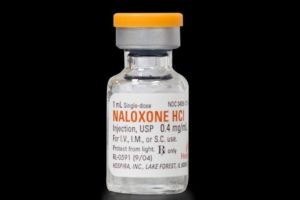 The impact of the OUD crisis has been so widespread that most Americans know someone who has overdosed, addicted, and been treated for an OUD. The effect is overwhelming and confirmed by the unprecedented three years of declining life expectancy in the United States. This decline in life expectancy is attributed to deaths of despair, depression-suicide, alcohol and drug abuse, opioid, and cocaine overdoses, and the natural progression of substance use disorders. [11]
The impact of the OUD crisis has been so widespread that most Americans know someone who has overdosed, addicted, and been treated for an OUD. The effect is overwhelming and confirmed by the unprecedented three years of declining life expectancy in the United States. This decline in life expectancy is attributed to deaths of despair, depression-suicide, alcohol and drug abuse, opioid, and cocaine overdoses, and the natural progression of substance use disorders. [11]
Ensuring ready access to naloxone is one of SAMHSA’s Five Strategies to Prevent Overdose Deaths. Co-prescribing of naloxone with high dose opioid prescriptions and the creation of standing orders allows dispensing to naloxone by pharmacists to patients at-risk.
All 50 states and the District of Columbia have implemented legislation to increase access to naloxone by allowing distribution by pharmacists, simplifying the process of obtaining naloxone, and expanding distribution to friends and families of individuals at risk for overdose. In 46 states, Good Samaritan laws have been implemented that protect bystanders and individuals from arrest or prosecution for administering naloxone in good faith.
As a result, the number of naloxone prescriptions dispensed by retail pharmacies increased by 106% from 2017 to 2018. The lowest percent of naloxone prescriptions from retail pharmacies occurred primarily in rural counties—areas that have been especially devastated by the opioid crisis [12].
While not a treatment per se for OUD, a harm reduction method for minimizing the risk of overdose is take-home naloxone. Naloxone is an opioid antagonist used to reverse an opioid overdose, and take-home naloxone programs aim to prevent fatal overdose.
We know that nearly all opioid overdoses can be reversed by naloxone and that OUD can be successfully treated with evidence-based, patient-centered treatments of adequate duration and intensity. The use of the overdose as a teachable moment, supplemented by peer and professional interventionists, can promote the transition from near-death and overdose to buprenorphine or methadone treatment.
After a nonfatal overdose, connecting individuals to a treatment facility that includes MAT is essential to positive outcomes [13]. Yet, making this hand-off is difficult and often fails.
Opioid use disorder (OUD) is a chronic, relapsing disease. OUD is associated with legal, interpersonal, health, and employment problems. Medications have been demonstrated to be safe and effective for OUD and approved by the FDA.
These medications are:methadone (a full opioid agonist), buprenorphine (a partial agonist), and naltrexone (an opioid antagonist) [14]. MATs are safe and effective, reducing overdose in those patients who are treatment adherent. Unfortunately, approximately 50% or more patients drop out of treatment prematurely.
Longer duration of therapy has the best outcomes [15]. But, treatment is slow and relapses common. Treatments for OUD are limited by poor adherence to treatment recommendations. Discontinuation of MAT is associated with high rates of relapse and an increased risk of overdose. People with OUD, whether in or out of surgery but especially after leaving treatment, should be carrying Narcan.
Recent data suggest that overdose risk continues long after patients complete treatment with buprenorphine [16]. The availability of naloxone largely determines overdose reversal at the place and the time that overdose occurs.
Opioid overdose reversal is similar to acute allergy anaphylaxis reversal with epinephrine. You need the epi-pen just like you need the naloxone and the willingness to administer naloxone [17]. Yet we cannot know, with any degree of certainty,
Summary:Naloxone – Narcan
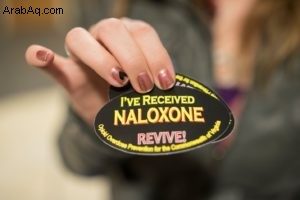 With EMTs, general hospitals, and emergency departments overwhelmed, and without reliable face-to-face access to addiction evaluations and treatments, the opioid overdose response system needs a reinforced and Narcan armed and trained citizen and family base. Naloxone (Narcan) is a non-opioid wonder drug that can reverse an opioid overdose.
With EMTs, general hospitals, and emergency departments overwhelmed, and without reliable face-to-face access to addiction evaluations and treatments, the opioid overdose response system needs a reinforced and Narcan armed and trained citizen and family base. Naloxone (Narcan) is a non-opioid wonder drug that can reverse an opioid overdose.
It is impossible to know where or when a potentially fatal opioid overdose will occur. But, improving Narcan availability is the best chance of saving lives from overdose. It is short-acting, and by temporarily reversing the effects of opioids, it gives a person with an opioid use disorder (OUD) a second chance—and opportunity to receive treatment.
The federal government has now recommended that the drug be readily available as an over-the-counter formula in most pharmacies. Naloxone is available without a prescription in 43 states. Besides being available in hospitals, the drug is carried by emergency medical staff as well as law enforcement personnel.
Also, the availability of naloxone over the counter has made it easier for family members and caregivers of patients with opioid use disorder to administer the drug. It is evident, logical, and well-reasoned to increase naloxone availability in emergency departments, ambulances, and among emergency medical technicians (EMTs), as they routinely encounter opioid overdose.
However, improving naloxone access at other points of care where overdose risk is likely, remains a challenge. An excellent place to start is by encouraging all patients with OUD to carry naloxone, for their loved ones to carry naloxone, and for their homes to have naloxone nearby in the bedroom or bathroom.
Current and past OUD patients, as well as their loved ones, are a high risk of overdose group and should have naloxone nearby at all times. Naloxone can reverse an opioid overdose, but it should be thought about like cardioversion or CPR rather than a treatment for an underlying disease.
There is no evidence even to suggest that having an overdose and rescue changes the course of an OUD or substance use disorder. So, while Narcan saves lives and is a wonder drug, it does not replace an intervention, treatment with a MAT, a counselor, a good treatment program, and a treatment plan.
